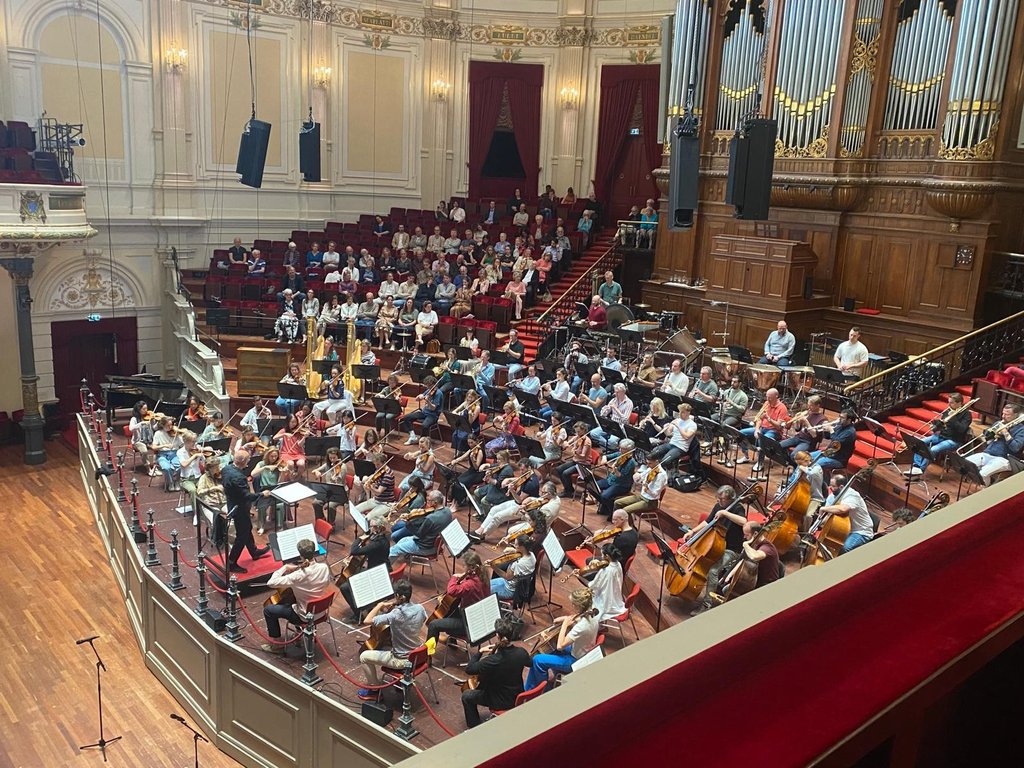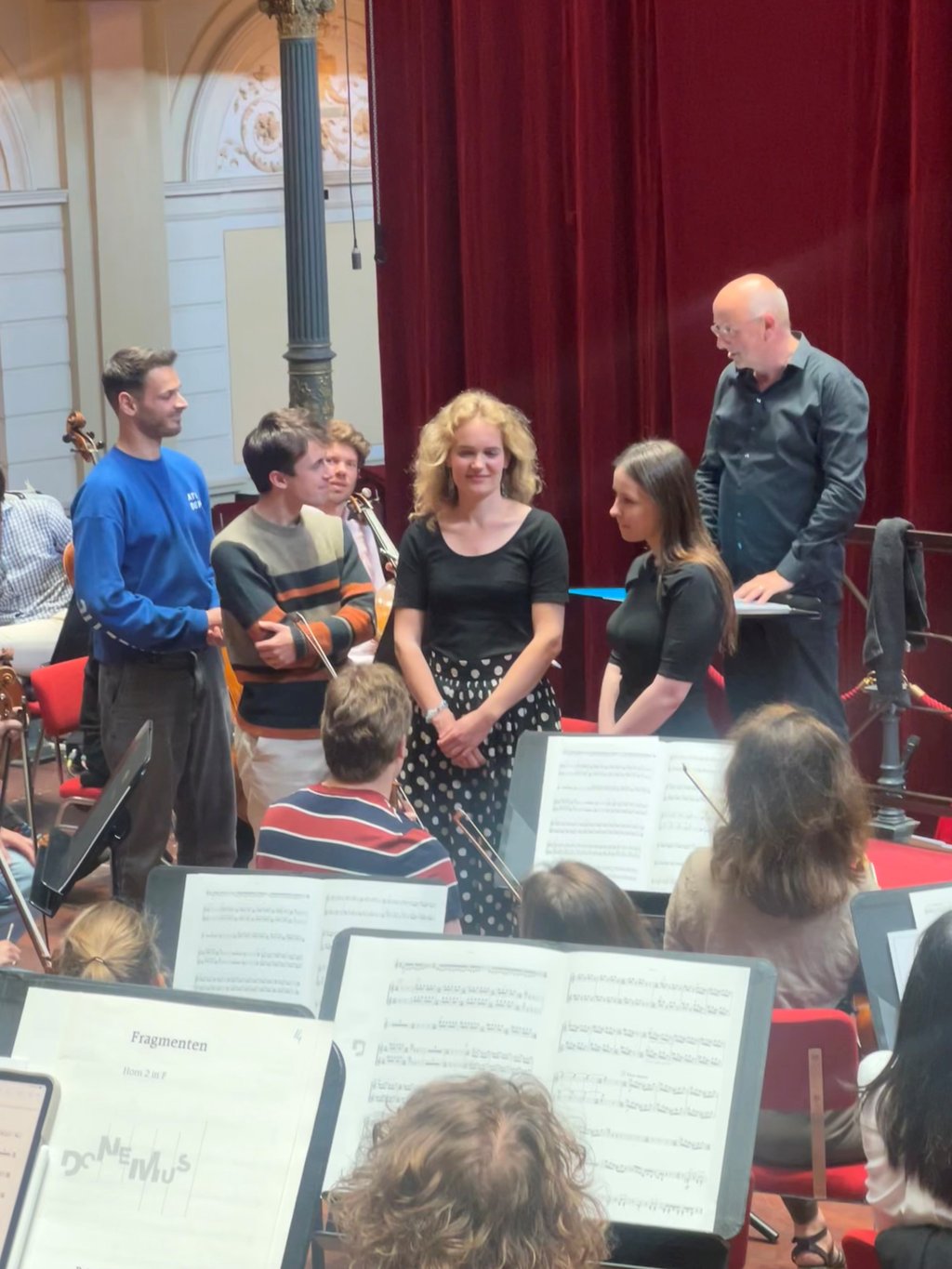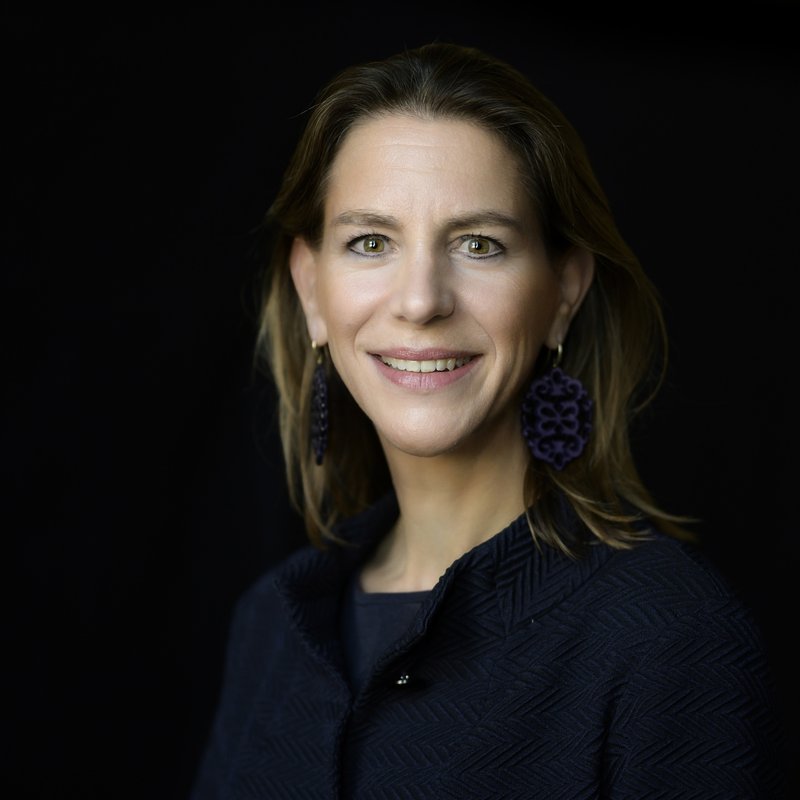Wed, Jul 2, 2025
Our first composers’ workshop took place on 12 June 2025. It was a fantastic opportunity for young promising talent to gain experience with a high-level symphony orchestra! It proved to be a fascinating, valuable learning moment for the orchestra and the young composers alike – and for the audience too.
As an orchestra, we love to stay connected with composers. It is vital to keep the tradition alive.
Mahler, Debussy, Ravel, Stravinsky – all celebrated names today. But not that long ago their music once started out as unknown contemporary works. When the Concertgebouw Orchestra put their pieces on the stand, they were often met with resistance from quite a lot of people. But perseverance paid off, and gradually the music came to feel at home in our ears. With the passing of the years, new and younger composers keep emerging, with fresh ideas. Ligeti, Benjamin, and Adams are now fully integrated into the canon – and the newest generation is just as gifted. As an orchestra, we love to stay connected with composers. It is vital to keep the tradition alive.
For composers, this connection is just as vital. Composing for an orchestra is a specialised and technically complex endeavour. Orchestras have limited time, however, making it incredibly difficult for composers on the foothills of their careers to gain real orchestra experience.
Four young composers
The Concertgebouw Orchestra’s first composers’ workshop was therefore a very welcome opportunity for all parties. Our orchestra musicians got to know four new composers and their diverse musical worlds, while the young tunesmiths gained experience with a high-level symphony orchestra. Is my idea working? If not, how do we fix it? How do I communicate that through the conductor?
From a long list of talented composers, four were selected: Catharina Clement, Thomas van Dun, Primo Ish-Hurwitz, and Annija Anna Zarina. They were given a (paid) commission. To make a few sketches or fragments, something they were already hoping to try out, or a previously written “failed” piece they wanted to improve on – anything was allowed. In the end, all four came up with a new work of about 8 minutes. Earlier this year, a committee consisting of several orchestra members, composer Detlev Glanert (a regular collaborator with the orchestra), and Mark van Dongen (our recently retired assistant artistic affairs ), gave them feedback on their first drafts, that the participants incorporated into their scores.
Workshop with an audience
On 12 June, the actual workshop took place in the Main Hall of The Concertgebouw, in an informal setting with a small audience. The experienced composer Brett Dean was present as a mentor, and the orchestra was led by Jurjen Hempel. Each composer received 45 minutes of “rehearsal time” in the presence of the audience. Music publisher Donemus provided playing material and will publish the pieces later.

It was incredibly insightful for everyone present: with just a few little adjustments and pointers, lifeless notes on paper can be transformed into a captivating new orchestral work.
It was fascinating to witness how the four compositions bloomed, even within such limited time. Each of our orchestra members is a top-level musician who can play all these new notes perfectly, and yet during the first run-through doubts would bubble up whether the piece truly worked, whether it was good enough. Every time these doubts proved to be misplaced.
The down-to-earth conductor Jurjen Hempel would make a number of modifications right at the beginning. “Can the trombones make a better connection to what the horns are doing here? Can that rhythm there be more pronounced?” In response, the composers could make changes or ask questions themselves. Some were happy to accept the suggestions from the orchestra and Hempel, while others had their own very specific ideas about what could be improved. And so, each piece gained in form and substance within its allotted forty-five minutes. It was incredibly insightful for everyone present: with just a few little adjustments and pointers, lifeless notes on paper can be transformed into a captivating new orchestral work. Sometimes you could see the composer’s face light up. Hempel: “This is our goal: a happy composer.”
Now and then, Hempel would ask mentor Brett Dean what his advice was. He sometimes offered more far-reaching suggestions. One time he proposed omitting an entire instrument group for a few measures to create more clarity.
The story emerges
Stylistically the differences between the composers were remarkable. As the titles of all four works already illustrate. “Fragmenten” by Primo Ish-Hurwitz proved to be a layered, rather complex polyphonic work – in a sense, the most traditional of the four. Here, most of the work involved discovering the larger form – the music turned out to be much less fragmentary than initially thought, and gradually, the story took on more solidity.
The larger form was immediately apparent in Annija Anna Zarina’s “Bloom” – within a seemingly stark, static environment, the Latvian composer built a discourse with a handful of textures and subtle motifs. Over to the conductor to forge the elements into a more organic, musical whole.
Intertwined rhythms
From Catharine Clement, a section from her piano concerto “Insneeuwing” (Snowing In) was heard. Our pianist Jeroen Bal took on the challenging solo part. The piano sounds combined with those of percussion, harp, and celesta to create a fairy-like sound world – a lot is going on in the music, but the neo-romantic gestures are clearly recognisable, and the musicians could handle them well. Here too, the key to the performance was to forge all layers and elements into one persuasive piece.
The contrast with Thomas van Dun could hardly be greater. The composer is inspired by electronic dance music – his “Knaldrang” (Explosion Urge) is an intertwining of rhythms with many and various accent shifts. As expected, achieving the right energy and clarity was the difficulty here. Playing the notes is one thing, but how do you weave them into tight, swinging rhythms, especially in the diffuse acoustics of The Concertgebouw? Perhaps the biggest challenge of all.

Be Clear
Ultimately, it’s always about clearly and precisely notating what you, as a composer, want. As Zarina told Preludium about the initial verbal feedback she received on her composition. “My piece begins with trills in different orchestra sections. I was told not to write trills in the score but to write out the notes in exactly the right rhythm. This way, it’s clearer for the musicians what I want to hear, and they have more control over the timing.”
Initiator Mark van Dongen emphasises that these are exactly the kinds of issues the learning process revolves around. “In regular concert practice, there’s sometimes only twenty minutes of rehearsal time for a new work. If the composer hasn’t clearly written down what he or she means, that eats into that precious time.”
Leading Women in Music Fund
The Concertgebouw Orchestra’s composers’ workshop is made possible with the support of the Leading Women in Music Fund. With this fund, we are pleased to contribute to a better representation of women among top-tier composers and conductors worldwide.
